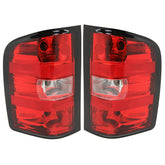Why do car bumpers use plastic?
The application of bumpers can be traced back to the late 1960s and early 1970s. At that time, bumpers mainly used metal materials such as chromium steel or cobalt steel, but these materials were prone to rust, deformation and other problems, and were difficult to carry out design innovation and plastic processing. As a result, automakers began exploring the use of plastic materials for bumpers.
The first car brand to use plastic materials to make bumpers was the Ford Motor Company in the. They launched the first car bumper using plastic materials in 1971. Since then, more and more car brands have begun to use plastic materials to make bumpers. For example, most car brands now use plastic materials to make bumpers.
Compared with metal materials, plastic bumpers can cope with problems such as rust, deformation, and design innovation, while also saving production costs to a certain extent.
So what are the advantages of plastic bumpers?
1. Lightweight
Compared with metal materials, plastic materials are lighter, which is beneficial to reducing the weight of the vehicle and improving vehicle safety and fuel economy.
2. Anti-corrosion
Metal materials are susceptible to corrosion and oxidation, while plastic materials have better corrosion resistance.
3. Good energy absorption performance
Vehicles are prone to collisions and collisions while driving. The use of plastic bumpers can better absorb collision energy and ensure the safety of the vehicle's occupants.
4. Low cost
Compared with metal materials, plastic materials are lower in cost, which is beneficial to reducing vehicle production costs. It won't cost a lot of money to replace it with a new one.
But plastic bumpers also have shortcomings.
1. Poor wear resistance
Plastic materials have poor wear resistance compared to metal materials and are easily damaged and worn due to friction and collision.
2. Poor high temperature resistance
High temperatures can easily cause plastic materials to deform and age, which means that in high-temperature environments, plastic bumpers may lose their energy-absorbing capabilities and protective functions.
3. High maintenance costs
If the bumper is damaged, the repair cost is higher than that of a metal bumper, and the entire bumper may even need to be replaced.
4. Difficulty in atomizing spray paint
Compared with metal bumpers, the painting effect of plastic bumpers is not as good as that of metal bumpers, and it is not easy to achieve the desired effect.
Supapro Auto Parts Online shop for car headlight assembly, front bumper grille and rear bumper roll pan etc. Professional manufacturer of auto parts, welcome to consult and purchase.






